Where ships are born
Zelenodolsky plant named after AM Gorky is a shipbuilding plant located on the Volga in the city of Zelenodolsk of the Republic of Tatarstan.
The company has been operating since 1895, when, pursuant to a decision of the Ministry of Railways of the Kazan District, the Parat yacht repair workshops were set up, designed to repair the technical fleet located in the Paratskiy Gulf on the Volga, 40 km from Kazan.
The main profile of the company is the construction of modern ships and vessels for various purposes, their delivery to the domestic market and for export. Over the years of its history the plant has built more than 1500 marine and river ships and ships, including about 600 military.
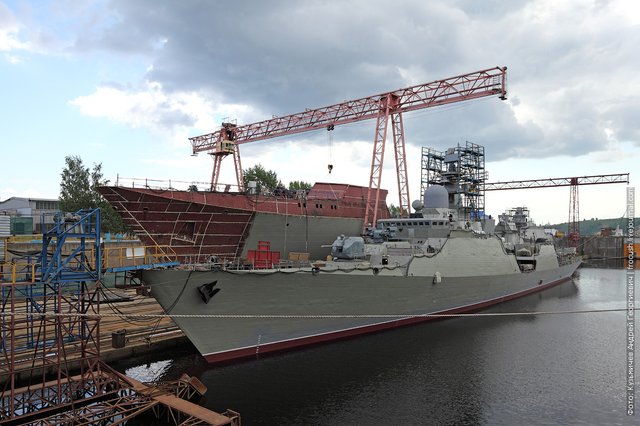
At the shipyard there is a museum where the entire history of the plant is told. For example, from 1960 to 2006, a series of high-speed hydrofoil-type ships, Meteor, was built at the plant to transport passengers on transit and local lines. In total, more than 400 units of vessels were built, some of which still work in Russia and around the world. And in front of the museum there was an armored car-234 named after A. Kalyuzhny, which was built by the workers of the plant in August 1943 and went through a military route from Azov to Vienna. Brought from the port of Izmail and installed in 1973 on the territory of the plant.
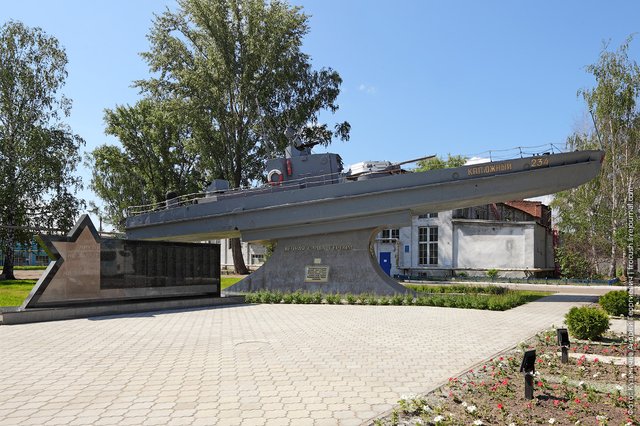
We put on helmets and go to get acquainted with the production.
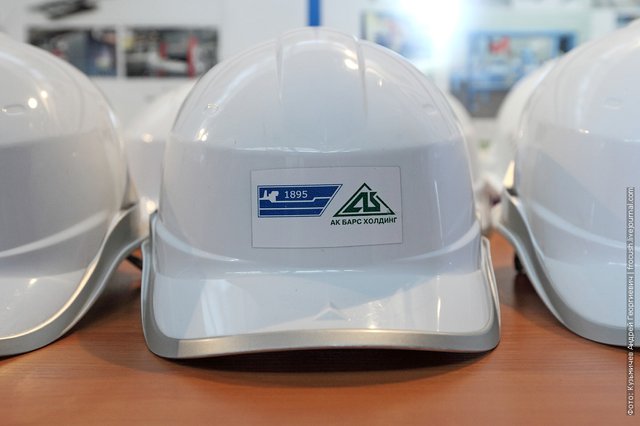
The story of the production of ships will begin with the hull-processing shop.
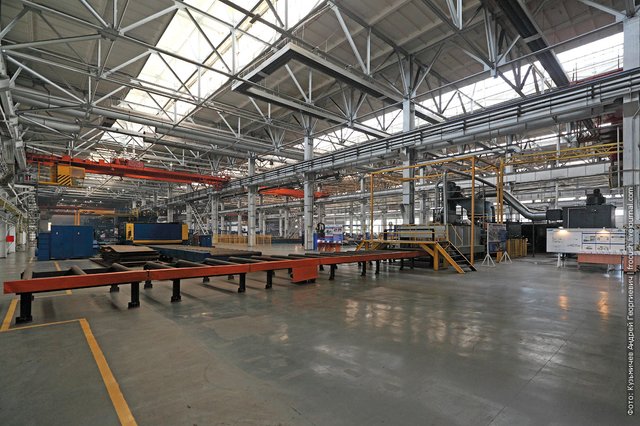
To begin with, all metal, which will then be used to manufacture sections and units of ships, must undergo a cleaning line.
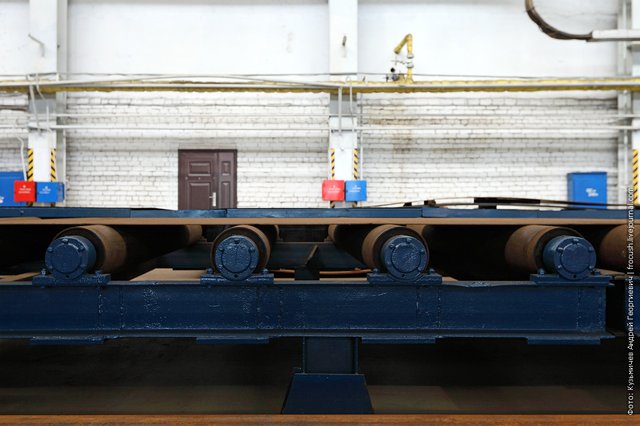
Here, all sheet and profile rolls are cleaned of scale and rust, primed with interoperative primer.
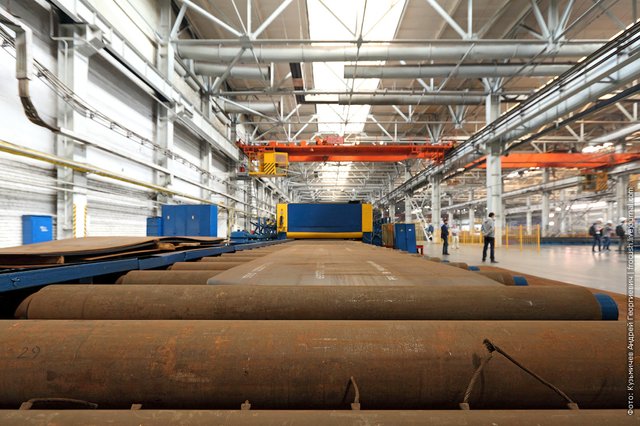
Then the metal sheets are cut into blanks, from which later the ship sections will be assembled.
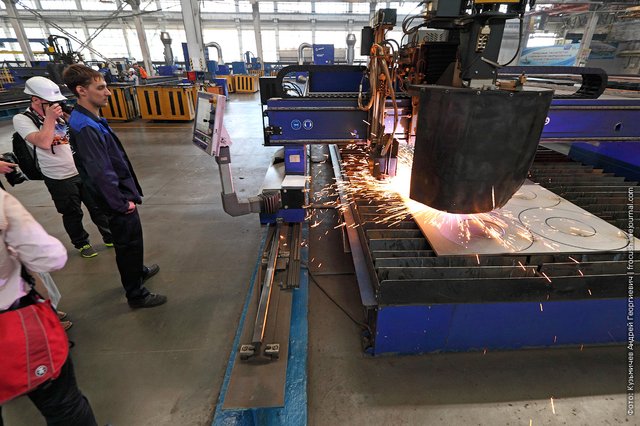
Cut the metal using a plasma cutting machine MESSER OmniMat L5000 (Germany). The machine is able to cut low-carbon steels, high alloy alloys, non-ferrous metals and titanium.
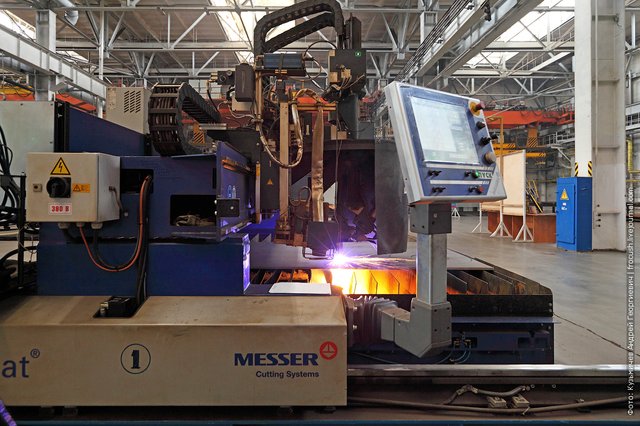
Cutting takes place under the control of operators. The plasma cutting line of the MESSER metal allows cutting metal with a thickness of almost a centimeter at a speed of 12 meters per minute.
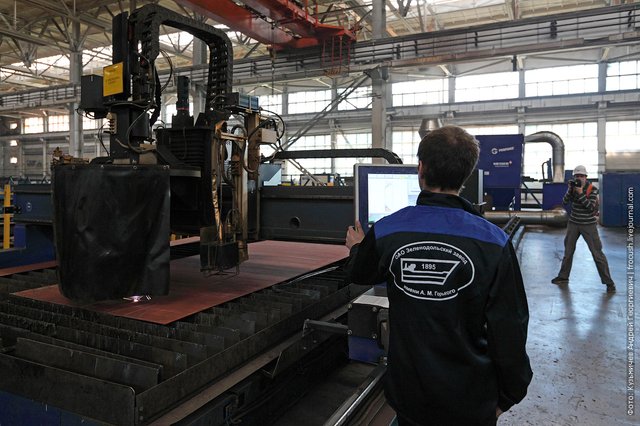
No, you just look. Here, ships are created, and they became interested in a seal!
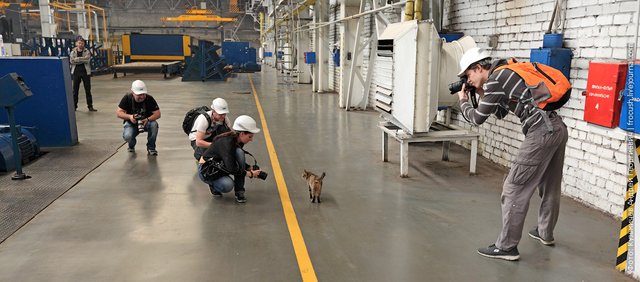
As if they had never seen.
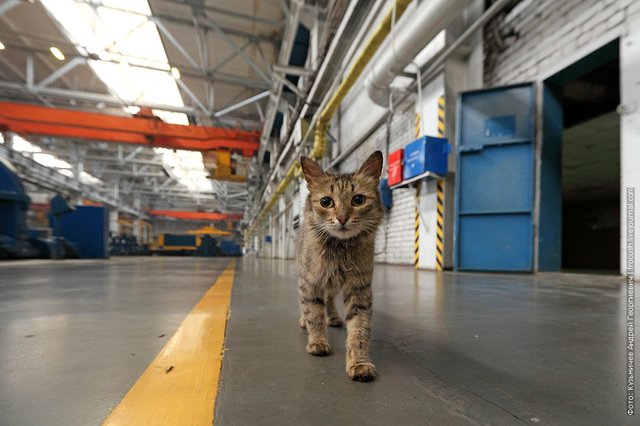
If you want to bend the metal sheet, then use a sheet bending machine.
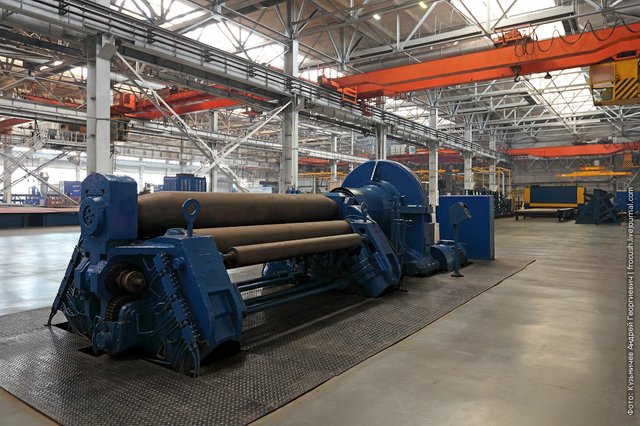
For stamping the ship's parts, a hydraulic press is used.
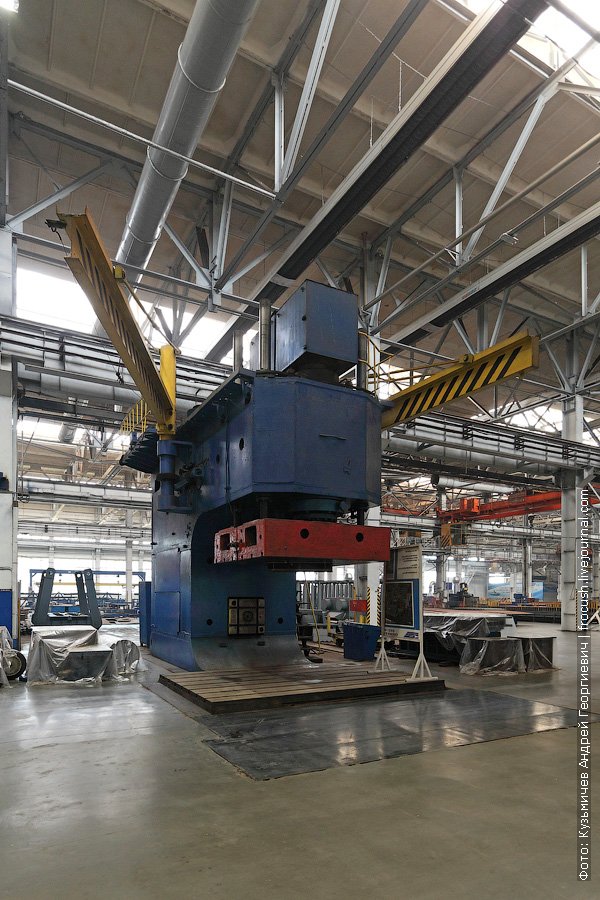
And this press is able in three dimensions to bend details up to 30 mm thick.
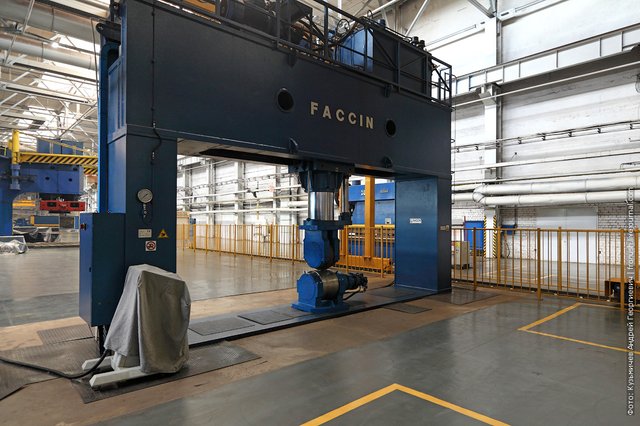
Waterjet cutting machine MODULA 3 (Italy). The working area of the installation is 2.5 by 12 meters - the largest work area in Russia. Here, it is possible to cut almost any material from 1 mm to 250 mm thick with a 5-axis cutting head into which liquid with abrasive substances is supplied at a pressure of 6200 bar.
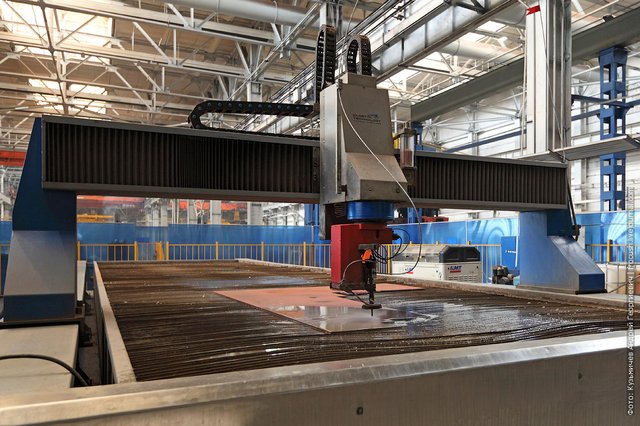
What remains after cutting, then goes to the melting.

Cut and stamped parts are connected to each other in small units, and then into larger sections.
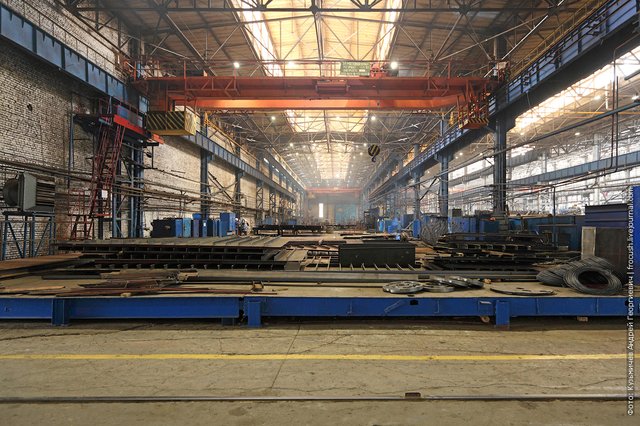
In the shipbuilding shop, the ship in general acquires its final features, where the sections are put together, and these large sections are transported on such a heavy truck - the self-propelled transporter Cometto.
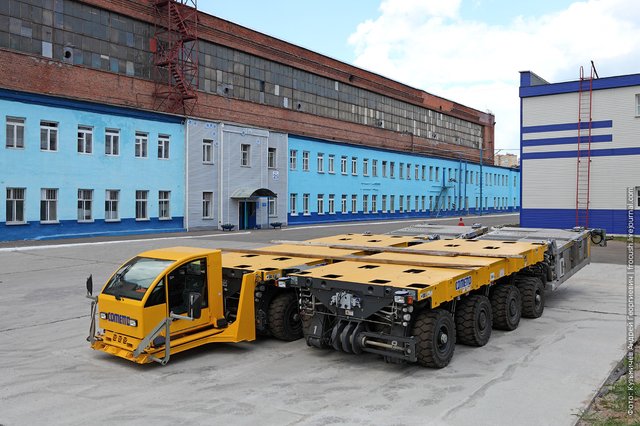
The transporter is small, below Vitaliy, but extremely tjagovity: with its own weight of 17 tons, can carry up to 175 tons of cargo.
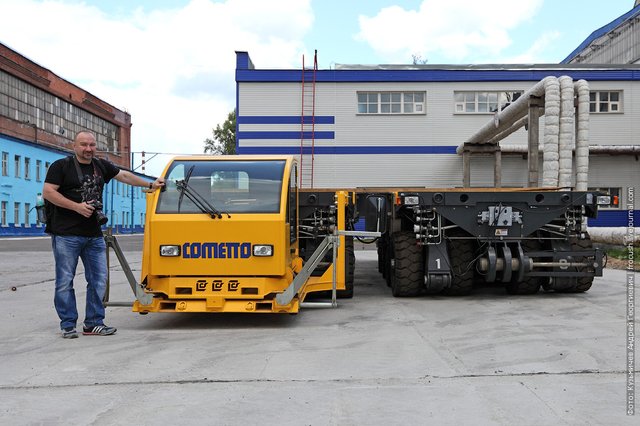
Here such huge sections on the transporter are delivered to the staple-tuning shop where, being connected to each other, they turn into a single whole - the hull of a real ship. The white ribbed gizmo in the photo is the fuel tank of the ship.
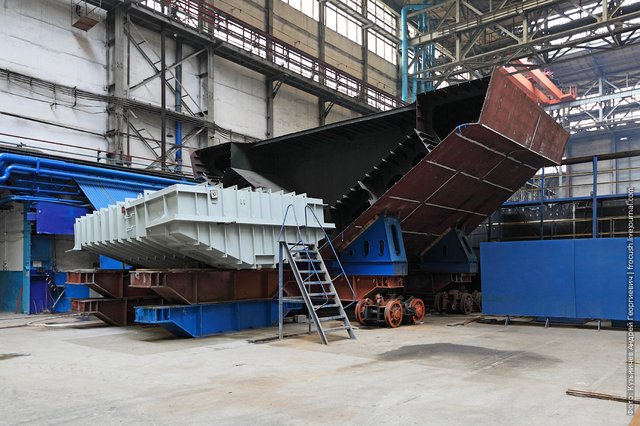
So it looks like a slipway, on which the hulls of ships from separate sections are assembled.
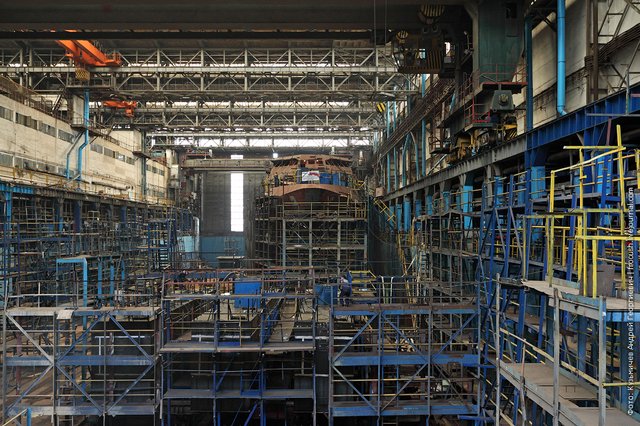
All the time, new parts and modules are brought in, immediately fixing them in their place.
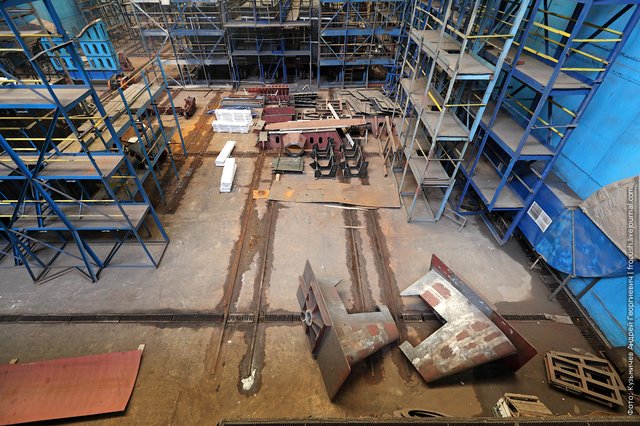
On the slipway is assembling the patrol ship "Dmitry Rogachev" (project 22160).
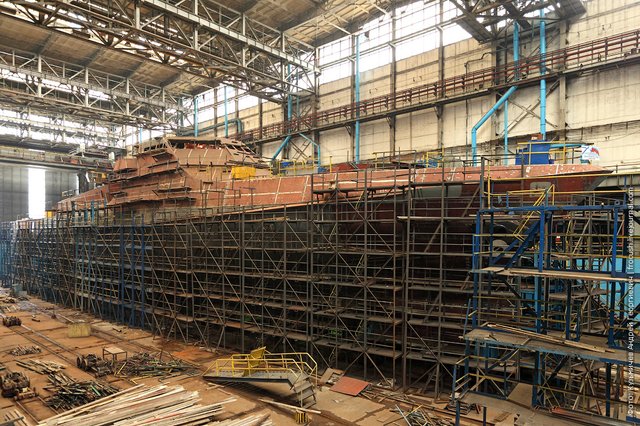
Then the body on the carts will move to the dock, where the final completion of the ship will take place.
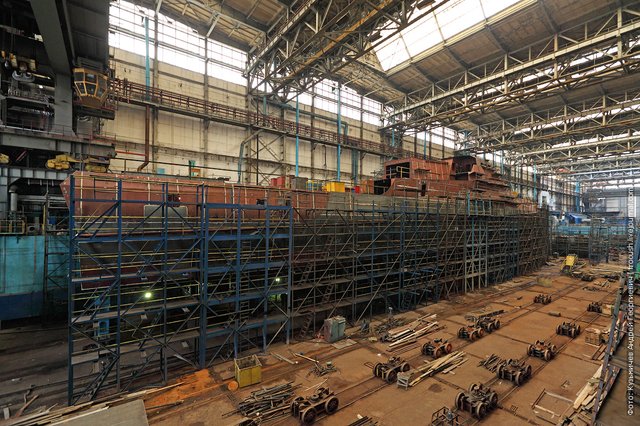
At the moment, the company is building 18 ships.

The construction of ships is carried out by order of the Navy of the Russian Federation and a number of foreign countries.
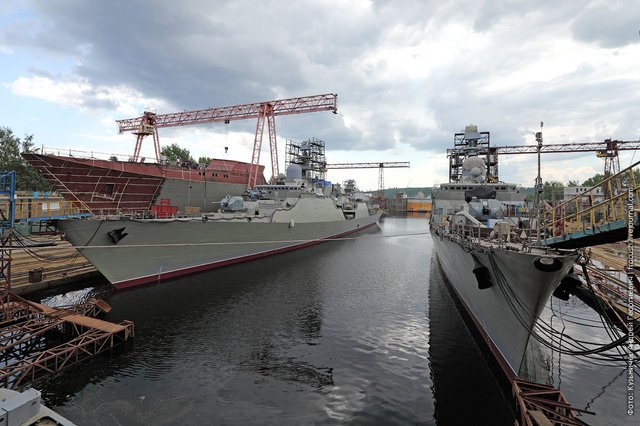
Then the finished ships will leave the walls (docks) of their native plant and go along the inland waterways to the places of combat service. It is noteworthy, but on inland waterways they will go not their own way, but will be towed on pontoons by pushers and tugs, because of the depth limitations of the ship's passage.
We leave the territory of the plant, but that's not all. Take a closer look. Between the red tanker and the dry cargo ship, the hull is clearly visible, in which the features of the ship of the 588 project are guessed. Due to the lack of superstructure of the middle deck and higher, I did not even realize at first that this was a passenger ship. But it turned out that this is the ship "Arabella" , from which, in 2012, they are trying to make a VIP-yacht. But due to lack of funding, this process is delayed. They promise to complete by 2017-2018.
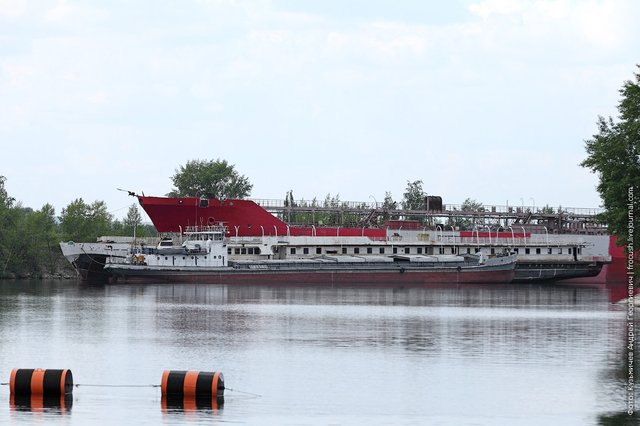
At the shipyard there is a children's yacht club.
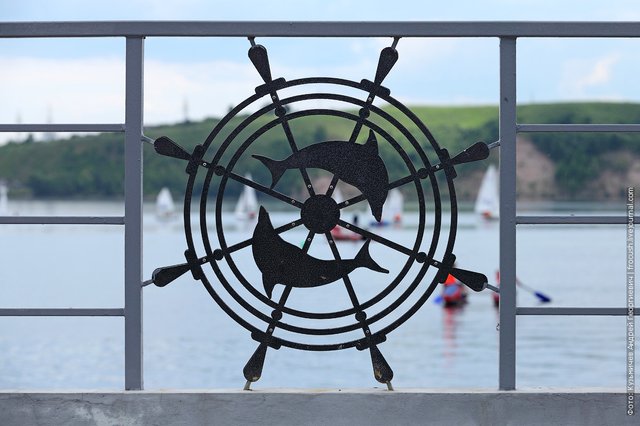
Guys comprehend the basics of navigation and learn to sail.
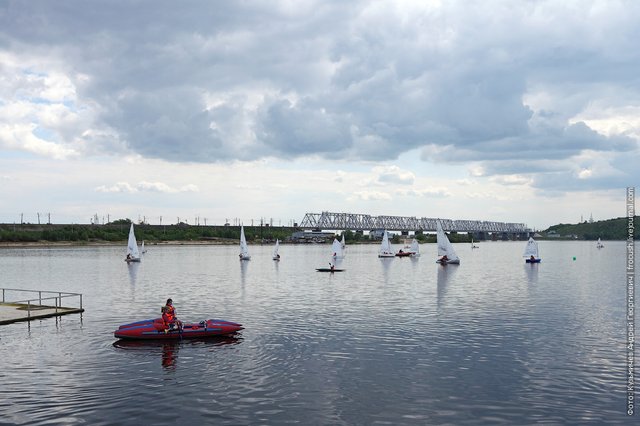
Education for children here is free.
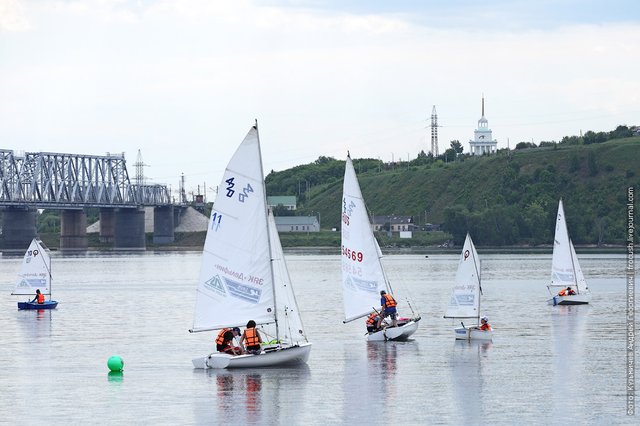
It is likely that the current pupils of the yacht club will then come to the shipbuilding plant, or they will become skippers of the plant's products. Work for the future!
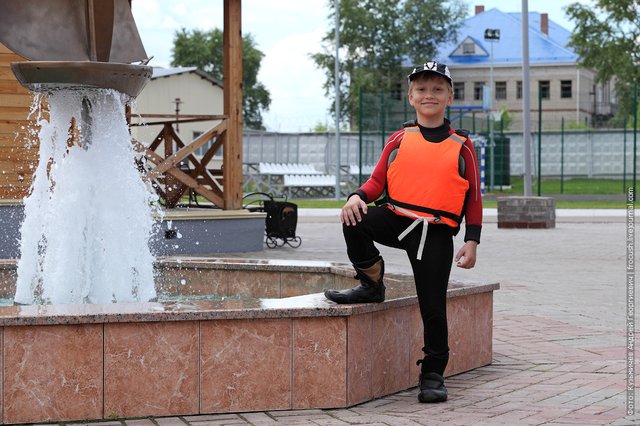
Vote for my post and subscribe to my blog @frocush!
Find me! LiveJournal | Facebook | Instagram
excellent post friend I am an engineer and I work in a shipyard in venezuela. Those who work building boats know how exciting it is. the welding, the manufacture of the painting, everything is exciting. thanks for sharing. Anything is in order here.